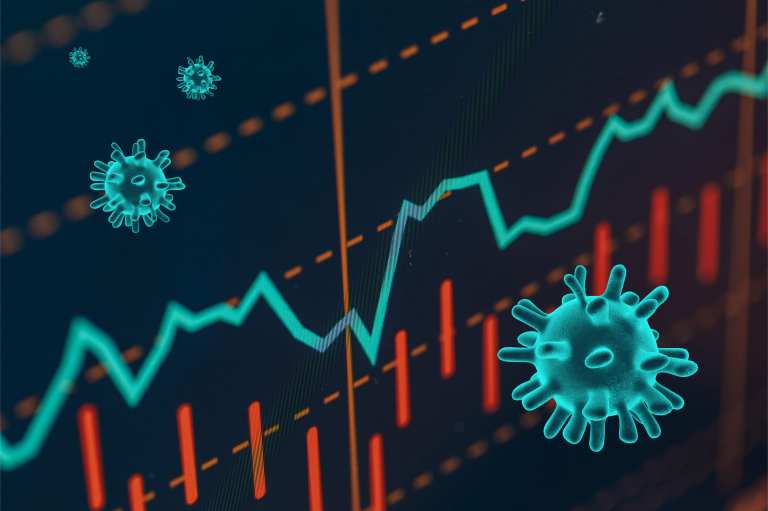
It’s almost impossible to look away from the screens of red (sometimes, though, they’re green for an instant) that dominate stock markets.
Look away for a minute and consider that markets are implied bets.
In the simplest terms: Markets are lower, drastically so, because investors are worried that earnings will be lower, and earnings will be lower because the coronavirus will continue to take the wind out of sales … across any number of verticals, and especially those dependent on consumer spending.
As JPMorgan said in a research note published Tuesday (March 10), the market sell-off that continued into the week (where, we note, Monday was a disaster, Tuesday marked a partial recovery and Wednesday resumed the rout) implies as much as a 75 percent chance of recession over the next 12 months.
“In our view, however, the market has gone ahead and priced in too severe of an adverse scenario, assuming we get timely and strong counter-policy response and a COVID-19 outbreak that peaks in the coming weeks,” read the note, as penned by JPMorgan’s chief U.S. equity strategist Dubravko Lakos-Bujas.
Elsewhere in the note, the analyst stated that, as of Monday’s action “the current equity sell-off reached bear market territory (~ -20% from peak) and is now almost in-line with the median market-sell off since 1928 that preceded an upcoming recession.” History, then, gives an indication of what might happen with equities.
But in the same note, JPMorgan contended that fiscal and monetary policy could go some distance in blunting the economic impact of the coronavirus on the consumer, who, after all, powers so much of the U.S. economy (about two thirds of it, according to some estimates).
“We estimate that a combination of payroll tax reduction, refinancing of in-the-money residential mortgages and lower gasoline prices could cushion the average US household by providing roughly $1,000 saving in the next twelve months,” according to JPMorgan.
Wednesday’s headlines saw some incremental news related to, for lack of a better word, propping up the U.S. consumer. The Trump administration, according to NBC News Tuesday night, is eyeing slashing the payroll tax rate to zero (it is currently 6.2 percent paid by workers, and a matched amount from employers, on salaries up to $137,000) through the end of the year. In addition, postponing the April 15 tax filing deadline — another option currently on the table — may keep at least some cash in individuals’ and business coffers.
The Fed? Well, it’s likely to cut interest rates again next week at its Federal Open Market Committee meeting, a move that would come right on the heels of the emergency rate cut earlier this month.
All of that comes against a backdrop where data released by the U.S. government Wednesday showed that consumer prices were up 10 basis points last month, a match to January’s gain.
So, here’s the conundrum, even with a hypothetical $1,000 in cushion, and with tax breaks in the offing: Prices are rising, some goods are in short supply, while demand for travel, and luxury items and other non-essentials will continue to wane. The stimulus may not stimulate all that much — how do you spend money when what you need is absent from virtual and real shelves? As noted in this space through an interview with Jerry Flum, CEO of CreditRiskMonitor, in rough times, people save money. They don’t spend it. It may be the case that the very policy actions meant to grease the wheels of commerce wind up being nothing but sand in the engine.